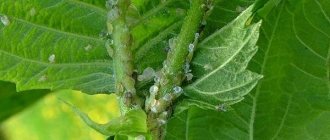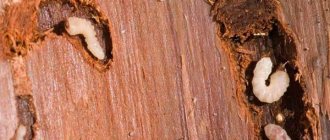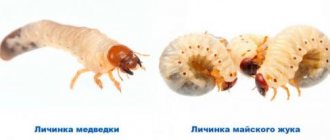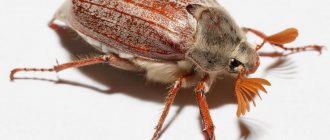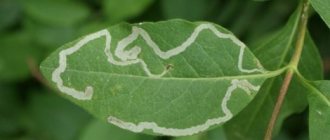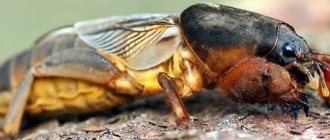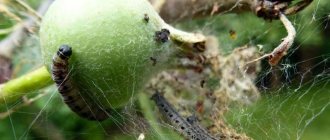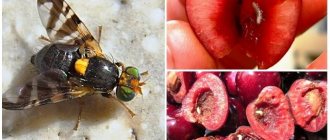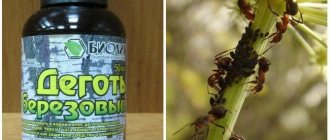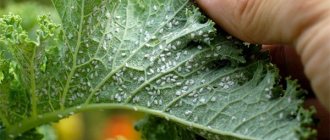The question of how to treat cabbage, roses, apple trees and other plants against caterpillars worries most gardeners. After all, these pests are not averse to eating not only green leaves. Caterpillars can even be found on pine and other conifers.
Almost all people love butterflies, but in our latitudes no one likes caterpillars. Meanwhile, there is a place in the world where caterpillars have earned honor and respect, and not at all for their culinary merits.
Many years ago, one Brazilian decided to move to Australia and took his favorite cactus with him - the prickly pear. The plant took root and began to reproduce, so actively that it soon took over vast areas and threatened agriculture and livestock farming. Felling, fire and chemicals could not cope with the invader. But the little butterfly succeeded. It was its caterpillars, brought from Argentina, that destroyed huge areas of prickly pear, restoring biological balance. And grateful Australians not only introduced strict quarantine on the import of plants, but also erected a monument to the little caterpillar.
But such stories, unfortunately, are very few. Most often, caterpillars damage the garden and vegetable garden, depriving us of our treasured harvest.
Varieties and harmfulness of caterpillars
The process of appearance of worm-like larvae is simple - butterflies lay eggs on the back of leaves or on plant stems, from which caterpillars emerge. The larvae remain in this form from several days to several years and constantly harm the plant.
Depending on what the caterpillars feed on, they are divided into four groups:
- Polyphages - absorbing everything in their path and causing the greatest harm to plantings.
- Monophagous - feeding only on a specific plant.
- Oligophages - eating crops and fruits of one family.
- Xylophagous - destroying bark and wood.
Each group has its most dangerous representatives. Not all caterpillars pose a threat to agricultural crops, however, among them there are such serious parasites that can easily destroy the yield of some vegetables and fruits. The most harmful caterpillars on a summer cottage include the larvae of cabbage moths, cutworms, gypsy moths, lacewings, and leaf rollers. They differ in the type of food, size and color.
Black
Black caterpillars found in the garden can be harmless peacock moth larvae and dangerous larvae of the armyworm and gypsy moth. The offspring of the peacock's eye are frightening in appearance, but practically do not harm most country plants. Black larvae with long spines live mainly on weeds - nettles and thistles. They are less common on raspberry bushes.
In spring and early summer, large colonies of caterpillars can be seen hanging from plants in clusters. A large number of peacock eye larvae can cause damage to raspberry plantings, however, timely processing of berry bushes will help preserve the harvest.
More significant damage to plants is caused by the larvae of the warlike moth, a gray-brown moth-like moth. Black 4-centimeter polyphages can significantly reduce the yield of fruit trees and shrubs. This caterpillar is often found on sunflowers.
The voracious offspring of the gypsy moth can be recognized by their dark color with orange dots. These larvae grow up to 7 cm and eat flowers and leaves of apple trees. If caterpillars are found, they must be exterminated without delay, otherwise you may lose your apples.
Gray
Gray caterpillars with a greasy sheen, growing up to 5 cm, are the larvae of the moth. They appear in two stages, develop quickly over 5-10 days and are so insatiable that in just a few days they can completely deprive the plant of green leaves. The first stage caterpillars hatch from June to July and destroy seedlings of sugar beets, corn and sunflowers. The larvae of the second stage appear from August to September and parasitize mainly on vegetables - potatoes, beets, etc.
In one night, about 5 cutworm caterpillars can destroy a dozen plants.
Greens
Mostly green caterpillars are common in the country. From them appear cabbage whites, raspberry moths, cabbage cutworms, leaf rollers, and onion moths. The ones to be most wary of are female white moths, which lay several hundred eggs per season on cruciferous vegetables. Butterfly caterpillars are very aggressive and voracious; they quickly eat up plants, not allowing a head of cabbage to form, and then move to neighboring plantings.
Cabbage is attacked not only by white moth larvae, but also by cabbage cutworm. Cutworm caterpillars are difficult to detect - they feed mainly at night and hide during the day. Their presence can be judged by the holes on the leaves of vegetables. Another species of butterfly that is dangerous to plants is the leaf roller. Two-centimeter polyphagous larvae damage all fruit trees and berry bushes. They can be found on honeysuckle, currants, raspberries, apple trees and pears. If you find a small green worm on a tree, you must immediately treat the plant with a special product.
Onion moth caterpillars develop and parasitize garlic and onions. These tiny insects devour the leaves of bulbous plants, gnaw through the stalks, shoot tissue and penetrate the bulb, which leads to the inevitable death of the plant. Caterpillars that parasitize raspberries and currants, wild shrubs and trees turn into bright green raspberries. Fortunately for gardeners, these beautiful butterflies are quite rare in nature, so they are practically never found in summer cottages.
White
Pale, tiny whiteflies are a source of headaches for gardeners. A small insect systematically destroys a plant at all stages of its development. Larvae and adults of the butterfly feed on vegetable seedlings and leaves of fruit bushes, in particular red and black currants.
Whitish worms can be seen on tomatoes, cucumbers, and peppers. During the growing season of plants, several generations of whiteflies appear, causing significant damage to the crop.
Yellow
Yellow larvae hatch from the eggs of the corrosive woodworm. Caterpillars feed mainly on wood, infect the trunk of plants with bacteria, and gnaw tunnels in the trunk and stem. As a result of the parasitic activity of caterpillars, plant branches become fragile and brittle.
Apple glass caterpillar
In addition to woodworms, xylophages include the offspring of the glass butterfly, which causes serious damage to garden trees. The larvae hatching from eggs laid in the bark gnaw passages in the trunk of the plant, which also disrupts the circulation of sap. Despite their name, glassworm caterpillars also parasitize plums and pears. If you spray the plants in a timely manner immediately after flowering, you can get rid of glass larvae for a long time.
Codling moth caterpillar
There is an opinion among summer residents that for every fruit there is its own codling moth. Apple, plum, pear and barberry trees fall under the attack of butterflies. The larvae of apple and plum moths are the most insidious, as they are oligophages. The danger of codling moth caterpillars is that they damage fruits and young leaves of shoots, causing the entire shoot to die. The worms penetrate the fruits, chew them out from the inside, and then move on to another untouched fruit.
Multi-colored bright caterpillars
Colored hawthorn and lacewing caterpillars pose a serious threat to agricultural crops. The shaggy gray-orange hawthorn caterpillar prefers to parasitize pink-flowered plants - apple trees, rose hips, almonds, and cherries. In a short time, it gnaws out buds, buds and leaves.
Large four-centimeter lacewing caterpillars, attracting attention with their red color with bright orange speckles, are dangerous not only for plants, but also for living beings. The hairs covering the caterpillar's body can cause an allergy attack or cause a burn to the skin.
Signs of defeat
Insect larvae are easier to control in the early stages of infestation. Regular inspection of currants for the appearance of butterflies, beetles and caterpillars on the leaves and shoots helps to notice pests in a timely manner. Warning symptoms include changes in the appearance of foliage, drying of buds and shoots, and the appearance of cobwebs. If you look closely, you can see clutches of eggs, which are usually found on the inside of currant leaves.
Signs of damage to currants by pest caterpillars:
- Leaves with through holes or completely gnawed down to the veins are the result of the activity of sawfly or moth caterpillars. Summer generations of larvae are particularly voracious.
- Damage by bud moth caterpillars is manifested by the presence of curled, limp leaves on currants with traces of black excrement.
- Currant clusters with shriveled berries entangled in cobwebs indicate infection of the bush with moth larvae. When kneading damaged berries, caterpillars are discovered.
- Leaf roller infestation is manifested by the appearance of leaves twisted with the help of a web.
- Glassworm is a pest that is difficult to detect in the early stages of infection. Insect caterpillars penetrate the stems, feeding on their pith. On a cut of a damaged shoot, dark-colored wood is clearly visible.
- Leaf, flower and stem gall midges injure various parts of the currant bush. Swellings with yellow and purple spots appear on the leaves, the buds turn pale and dry out, scratches and areas of bark peeling appear on the bark of the shoots.
When the first symptoms of pest infestation appear, measures must be taken immediately. Timely treatment of currants reduces the damage caused to the bush.
Use of chemicals
Insecticide-based chemicals are the most effective in combating voracious butterfly larvae. You can poison caterpillars in your garden using the following drugs:
- Spark and Karate;
- Aktara and Taran;
- Inta-Vir and Fufanon;
- Rovikurt and Karbofos;
- Lightning and Fas.
When used correctly, caterpillar poison can destroy a large number of pests. However, with constant use, the poison becomes addictive to parasites. Therefore, it is not advisable to use the same remedy for caterpillars all the time.
The use of chemicals can cause intoxication of the human body after consuming processed fruits, so it is necessary to strictly adhere to the manufacturer’s recommendations. The fight against caterpillars on flowers through the use of pesticides is carried out only in cases of the most advanced stage of infection.
Mechanical impact
Mechanical impact is the simplest available and safest control method, which includes not only dropping pests from trees and collecting them manually, but also removing overwintered nests and oviposition. Collecting caterpillars by hand must be done with protective gloves, as many larvae have bristles that protect them from enemies.
On a note!
You can also influence butterfly larvae through hunting belts, which are placed on a tree trunk to protect its crown. No less effective are traps in the form of jars, which are filled with aromatic bait liquids.
However, such manipulations will have a positive effect in case of minor infestation of trees or other plantings by caterpillars. If there are already too many insects, fighting caterpillars in the garden will not give the desired results. This method is not suitable for tall trees either.
Folk remedies for caterpillars
Folk remedies are not always as effective and efficient as store-bought insecticides. But they are also capable of inflicting significant damage on a multi-legged enemy.
Infusion of tobacco leaves
400 g of dry, powdered leaves are infused for two days in 10 liters of water. Before spraying the plants, the infusion is filtered and diluted with water 1:2, and 40 g of laundry soap is added to better fix the composition on the leaves.
Chamomile infusion
1 kg of leaves and inflorescences is poured into 10 liters of hot water and left for 12 hours. Before spraying, dilute with water 1:3 and add 40 g of soap for every 10 liters of infusion.
Infusion of common yarrow
Stems, leaves and flowers of yarrow (800 g) are poured with boiling water and infused for 30 minutes. Then dilute 10 liters of water and leave to infuse for another 4 days. Before use, add 40 g of soap.
Onion peel infusion
Experienced gardeners believe that this remedy is especially effective in combating caterpillars on cabbage. A three-liter jar is filled one third with onion peels, to which 2 liters of water are then added and left to infuse for 1.5-2 days. The infusion is filtered and diluted with water to 4 liters. For better adhesion of the infusion, add 25 g of laundry soap to the leaves.
Decoction of green tomatoes
The tomato tops are placed in the shade and dried, and then a bucket is filled with it, filled with water and boiled for an hour. The broth is filtered, diluted with water in a ratio of 1:5 and 45 g of soap are added.
Hunting belts
Hunting belts are sold in specialized stores. But making them with your own hands is not easy, but very simple. To do this you will need cardboard, paper, rags, plastic film, burlap or rubber. Hunting belts are safe for humans and can stop insects on their way to the treasured green crown of fruit trees.
Celandine
Celandine is simply dried and ground into powder. Then the necessary parts of the plants are powdered with this powder and scattered on the ground nearby.
Sagebrush
One kilogram of wormwood is poured with water so that it covers the entire part of it and this mass is boiled for 15 minutes. Next, the product is mixed in 10 liters of water and sprayed from a spray bottle. This poison is effective against leaf-eating insects.
Table soda
Dilute 2 tablespoons of soda in 10 liters of water and treat the desired plantings with the resulting solution. If it is expected to rain, you can simply sprinkle the cabbage with soda, because the rainwater will dissolve it.
Soap and birch tar
Birch resin is good at repelling caterpillars. In order to prepare a product based on it, you need to mix 4 tablespoons of tar with a third of a piece of grated soap. Next, the mass is mixed in a bucket of water and applied to the trees.
Penetration methods
As mentioned earlier, caterpillars can enter the apartment along with food in the kitchen. However, in addition to this, pests can be seen in other parts of the house.
- If the owner finds white caterpillars with a yellow tint in his apartment, then most likely furniture moth larvae have infested the furniture. They can also be detected by their fabric cocoons, which contain small white balls that look like dark rice. These insects can enter the house with purchased furniture. If the warehouses had unsanitary conditions suitable for insect life, then the larvae “came” to the house from there. The maturation stage of furniture moths is 3 months. The larvae grow at temperatures from 20 to 25 degrees. Apartment owners may not know about new neighbors for a long time, so when purchasing furniture you should carefully check the interior upholstery.
- Also, with the purchase of furniture, flea larvae can enter the house. They are not terrible for people, since they feed on dead human tissue, hair or synthetic fabric, which is a lot of furniture. When fleas grow up, they become dangerous to humans because they begin to drink blood. They can also be brought into the house with vegetables and pet products (rugs, bedding). If the house is old, then the larvae like to hang around in wooden planks.
- Pests are found in new mattresses and pillows. Clothes moth larvae look like small white worms with 6 pairs of legs. They can be identified by the silk case in which they live. They feed on the remains that humans leave behind: sweat, greasy food stains, hair.
- Carpet beetle caterpillars can get into your home with new carpet. Their elongated body has alternating brown and golden stripes. These larvae are found in clothing and pillow feathers.
- You should not take old furniture from your hands. If necessary, the boards should be checked. Caterpillars of grinder beetles can live in them. They live in the same furniture for about 20 years. They are very harmful to wooden materials and can then climb into other furniture. The larva is distinguished by its gray, fleshy body with spines on its head. Over the course of its entire life, this insect can chew through 50 km of wood.
- Due to dampness in the toilet and bathroom, silverfish larvae settle on the ceiling and walls. They have a white or silver body with a black shell. They don't like light, so they prefer the gaps between baseboards. Such insects live for 4 years and reproduce very quickly.
- If the kitchen is not clean, in addition to food moths, fly caterpillars may appear. They look like white worms. They are very dangerous because they spread infections. You should get rid of such neighbors immediately after discovering them.
Features of treating plants against caterpillars
When exterminating pests, it is important to follow certain rules:
- Adhere to processing deadlines.
- Do not get carried away with chemicals - you should use toxic compounds as a last resort, without exceeding the dosage.
- It is necessary to poison insects in dry, windless weather in the morning or evening hours.
- Wear protective equipment when using chemicals.
- Follow the rules of hygiene - after treatment you need to wash and change clothes.
- Destroy any remaining funds rather than storing them until next use.
- Do not harvest within 30 days after spraying.
Preventive cleaning in apartments and private houses
Once the owners have dealt with the caterpillars, one cannot be sure that they will not appear again. It is recommended to follow preventive measures:
- Purchased products should be transferred to sealed containers, checking them for the presence of caterpillars.
- Cereals and bulk products are stored only in closed plastic containers. If parasites are infested in cereals, they will not be able to move to other products.
- It is better to buy a few products and use them right away than to buy a lot, with a reserve.
Also, for prevention, it is necessary to clean the premises in which caterpillars previously appeared.
- If larvae are infested in the kitchen in winter, then all food is taken out to the balcony. Low temperatures can stop reproduction.
- All furniture should be wiped down with detergent.
- Then, in the places where the caterpillars were noticed, leaves of mint, cloves or allspice peas are laid out.
Preventive cleaning should be carried out as often as possible, at least once a week. This process will quickly identify the presence of new neighbors.
We select drugs against caterpillars correctly
Before you start fighting caterpillars, you must first select the right drug for treatment. Modern agricultural enterprises are trying to create a poison that would be suitable for any conditions and crops. However, some products are designed exclusively for certain plants, terrain and weather conditions.
For open ground
All modern means can be used both in open ground and in greenhouses. But it is better to use products that do not depend in any way on weather conditions.
For garden crops
The drug for caterpillars on fruit trees is selected depending on the type of insect. However, the product can only be applied to trees by spraying. You also need to take into account the toxicity class of the drug so that bees are not harmed during processing.
For closed ground
For greenhouses and hotbeds, those preparations that quickly evaporate or are washed away by precipitation in open areas are suitable. However, it must be remembered that the space is closed and the concentration of dangerous chemical vapors will be higher.
Reasons for the appearance of caterpillars in an apartment or private house
Insect caterpillars emerge only from larvae. If moth eggs were found in the house, it means that an adult moth entered the house through a window or doorway. This species loves damp places, so if the ceiling leaks a little, the moth will definitely settle on it.
Also, people themselves can often bring larvae into the apartment without noticing it. Caterpillars live in cereals, walnuts or candies. They also live in flour or dried fruits. Food products are susceptible to contamination due to poor processing or long shelf life.
The reason for the appearance of caterpillars is favorable conditions for reproduction and living. In addition to ceilings, caterpillars live in beds and sofas filled with fabric. It is important to quickly get rid of parasites, otherwise they will multiply at high speed.
Common types of pests
Some types of insects are rare, while others, being pests, attack plants frequently. Basically, caterpillars create nests in trees where they spend the winter. Such clutches contain from hundreds of eggs to several thousand. Then caterpillars appear, which should be gotten rid of before spring.
Pests vary in size and color. The most common ones are:
- The leaf roller is perhaps the most common and dangerous species. Such caterpillars are very small, but this does not at all affect the fact that they are incredibly voracious. © https://ydoo.info/qa/kak-izbavitsya-ot-gusenic.html The leaf roller feeds on all parts of the plant: leaves, buds, flowers and even fruits. The caterpillars twist the leaves into tubes, settle inside, weave webs and feed there. Parasites multiply very quickly.
- Hawthorn is the most visible species because these caterpillars are hairy. Their habitat is several leaves at once, which the parasites connect with a web and lay eggs on them. Hawthorn appears more often on trees. Plants in the greenhouse (cabbage, tomatoes, peppers) do not suffer from it. The caterpillars are found at the base or stem of the tree.
- The goldtail lives on branches. Internodes, small branches and leaves are ideal places for the lacewing to weave webs. In this way, parasites create housing for themselves for the winter. If caterpillars are found, you should get rid of not only the pests, but also the parts of the plant on which they lived.
- The gypsy moth, like the hawthorn, is hairy. He has approximately 500 eggs in his clutch. The parasites feed on the leaves, and after eating, only cuttings and veins are left. Thanks to the hairs, caterpillars fall from tree to tree - they are carried by gusts of wind. This is the main problem, because several plants suffer at once.
Other species are also found, but not in large numbers. They are not as dangerous as those listed. One way or another, you need to fight all species so that the plants in the garden and vegetable garden are healthy and bear fruit.
How to detect harmful insects
It turns out that you don't have to wait until your plants are completely empty to detect the presence of caterpillars. Inspect the green spaces and check if they have:
- Eggs. The best way to distinguish caterpillar eggs from other insect eggs is to watch the butterfly crawling on its host plant. As it moves through its host plant, look for the tiny specks it leaves behind. The butterfly lays them singly or in groups, and the color varies from white to yellow, green or brown.
- Holes in leaves. Pests usually leave holes in the middle of the foliage, but the caterpillars start at the edge of the leaf and move inward. Look for ragged or jagged leaf edges.
- France This is a fancy term for a caterpillar's "poop." France caterpillars look like scattered ground black pepper on the foliage, which pests actively feed on.
Description
How to get rid of caterpillars? Caterpillars are insect larvae from which butterflies, moths and moths subsequently emerge. They can cause enormous damage to fruit-bearing trees and vegetable crops located on the site. To keep your garden and vegetable garden well-groomed, you need to put in a lot of effort. But no one is safe from parasite attacks. Pests can appear suddenly and must be dealt with immediately to minimize damage. There are several ways to get rid of caterpillars, each of which has a number of advantages.
